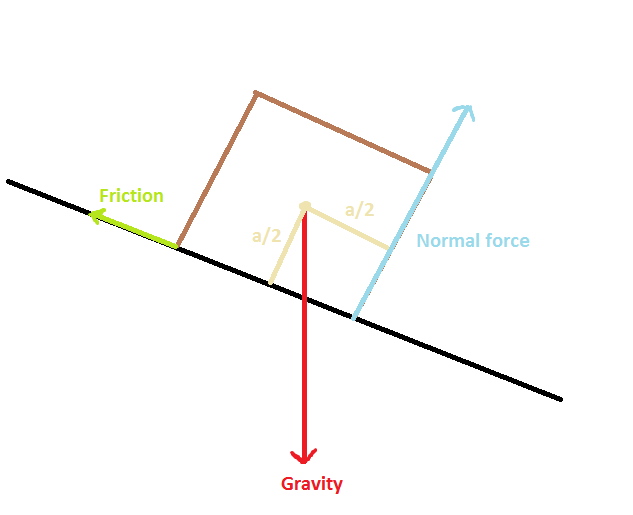Let's say that I have a cube with side $a$ and a ramp such, that the coefficient of friction between the cube and the ramp is $\mu$.
I want to determine the minimal angle of inclination of the ramp that will cause the cube to tip over.
This is what I have established so far:
The cube will tip over when it experiences a non-zero torque. My diagram represents a critical point, that is, when the torque equals zero and increasing the angle by any arbitrary value will tip the cube.
I am computing the torque with respect to the center of mass, and so the gravity contributes nothing.
Since the cube is about to collapse, the normal force is applied to the rightmost point of it in contact with the ground.
The torque generated by the normal force: $$\tau_N = \frac{a}{2} F_n$$ Counterclockwise. Where $F_n = mg \cos(\theta)$
The torque generated by the force of friction: $$\tau_F = \frac{a}{2} F_f$$ Clockwise Where $F_f = \mu mg \cos(\theta)$
However, the net torque will equal zero iff $\mu = 1$, therefore, it does not depend on the angle - this does not match my experience.
Where is my mistake?

